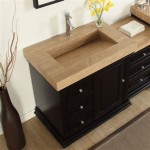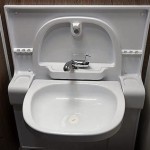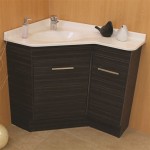How to Install a Countertop on a Bathroom Vanity
Installing a new countertop on a bathroom vanity can significantly refresh the look of a bathroom. This process, while potentially involving some degree of complexity depending on the countertop material and the vanity structure, is achievable for many individuals with a solid understanding of basic home improvement techniques and tools. This article provides a comprehensive guide to installing a bathroom vanity countertop, outlining the necessary steps, tools, and considerations for a successful installation.
Before initiating the installation process, it's crucial to select the appropriate countertop material. Common options include laminate, solid surface (such as Corian), granite, quartz, marble, and tile. Each material presents unique characteristics in terms of durability, aesthetics, maintenance requirements, and cost. The selection should align with the intended design, budget, and the existing plumbing configuration of the bathroom. The vanity itself should also be evaluated for its structural integrity, ensuring it can adequately support the weight of the chosen countertop.
Furthermore, appropriate safety measures must be taken throughout the installation. Eye protection, gloves, and a dust mask are essential to prevent injury from debris, adhesives, and other potentially harmful materials. If power tools are used, ensure they are in good working order and that all safety guards are in place. A clean and well-lit workspace will also contribute to a safer and more efficient installation process.
Preparing the Vanity and Countertop
The first key step involves meticulously preparing both the vanity and the countertop. This preparation is crucial for a seamless and secure installation. Start by ensuring the existing vanity is level and stable. If the vanity is not level, shims can be used underneath the legs to correct any imbalances. A level vanity is paramount for preventing stress on the countertop, which could lead to cracking or instability over time. Once the vanity is level, thoroughly clean the top surface where the countertop will be installed. Remove any existing debris, dust, or residue that could interfere with the adhesion of the countertop to the vanity.
Next, inspect the new countertop for any imperfections or damage. Ensure that the dimensions of the countertop align perfectly with the vanity. Measure the vanity top and compare it to the countertop's dimensions to verify a proper fit. Any discrepancies should be addressed before proceeding. If the countertop requires any modifications, such as cutting holes for the sink or faucet, these should be completed before installation. Using the manufacturer's specifications as a guide, carefully mark the locations for the sink and faucet on the countertop. Employ appropriate cutting tools, such as a hole saw or jigsaw, depending on the countertop material, to create precisely sized openings. The edges of these openings should be smoothed and sealed to prevent moisture damage. For heavier materials like granite or quartz, professional cutting services may be preferable to ensure accuracy and prevent damage.
If the countertop is pre-sealed at the factory, verify that the sealing is complete and adequate. If not, apply a high-quality sealant to protect the countertop from water damage and stains. This step is particularly important for porous materials like granite and marble. Allow the sealant to cure according to the manufacturer's instructions before proceeding with the installation. This proactive sealing will prolong the life of the countertop and preserve its aesthetic appeal.
Dry-fitting the countertop onto the vanity is a crucial step to identify any potential issues before applying adhesive. Place the countertop on the vanity without any adhesive and carefully inspect the alignment. Check for gaps, unevenness, or interference with any existing plumbing or structural elements. If any adjustments are necessary, make them at this stage. This dry-fitting process allows for precise adjustments and helps to avoid costly mistakes during the final installation.
Securing the Countertop to the Vanity
The second key step involves securely attaching the countertop to the vanity. While the exact method may vary depending on the countertop material and the vanity construction, adhesive is typically a primary component of the attachment process. Select an adhesive that is specifically designed for the chosen countertop material and is compatible with the vanity surface. Construction adhesive is a common choice for most countertop materials, but epoxy or silicone-based adhesives may be more suitable for certain applications.
Apply the adhesive in a consistent and uniform manner to the top surface of the vanity. Use a caulk gun or other appropriate applicator to distribute the adhesive evenly across the entire surface. Avoid applying too much adhesive, as this can create a mess and may not improve the bond. Pay particular attention to the corners and edges of the vanity, as these areas are more susceptible to stress and moisture damage. If the countertop is heavy, consider applying adhesive in a serpentine pattern to provide additional support.
Carefully position the countertop onto the vanity, aligning it precisely with the edges and corners. Press down firmly on the countertop to ensure good contact with the adhesive. Use shims, if necessary, to maintain the countertop's level while the adhesive cures. After the countertop is positioned, immediately remove any excess adhesive that has squeezed out from the edges. Use a damp cloth or sponge to clean up any adhesive residue before it dries. The type of solvent needed for cleanup will depend on the type of adhesive used.
Depending on the countertop material and the vanity construction, screws or mechanical fasteners may be used to further secure the countertop. If using screws, pre-drill pilot holes to prevent the wood from splitting. Choose screws that are the correct length and type for the vanity material. Ensure that the screws are countersunk properly to avoid any protrusions that could damage the countertop or create an uneven surface. Mechanical fasteners, such as countertop brackets, can provide additional support for heavy countertops and help to distribute the weight evenly across the vanity frame.
Allow the adhesive to cure completely according to the manufacturer's instructions. This curing time is crucial for achieving a strong and durable bond between the countertop and the vanity. Avoid placing any heavy objects on the countertop during the curing process, as this could disrupt the bond and compromise the integrity of the installation. Once the adhesive has fully cured, remove any shims or supports that were used to maintain the countertop's level.
Finishing the Installation
The final key step involves completing the finishing touches to ensure a professional and aesthetically pleasing result. This includes installing the sink and faucet, caulking the seams, and cleaning the surrounding area.
Begin by installing the sink and faucet according to the manufacturer's instructions. Ensure that all plumbing connections are tight and leak-free. Use Teflon tape on threaded connections to prevent leaks. Carefully tighten all fittings to avoid damaging the sink or faucet. After the plumbing is connected, test the sink and faucet to ensure proper drainage and water flow. Check for any leaks around the connections and tighten them as necessary.
Apply a bead of caulk along the seam where the countertop meets the wall and around the sink rim. Use a high-quality, mildew-resistant caulk that is designed for bathroom use. Smooth the caulk with a wet finger or a caulking tool to create a clean and professional finish. The caulk will help to prevent water from seeping behind the countertop or around the sink, which could lead to mold growth and water damage. Choose a caulk color that matches the countertop or the surrounding tile for a seamless look.
Inspect the entire installation for any imperfections or areas that need attention. Touch up any paint or trim as necessary. Clean up any remaining debris or dust from the installation process. Remove any protective films or coverings from the countertop. Dispose of all waste materials properly. Step back and evaluate the finished product to ensure that it meets your expectations and enhances the overall aesthetic of the bathroom.
Regular maintenance is essential for prolonging the life of the countertop and keeping it looking its best. Clean the countertop regularly with a mild soap and water solution. Avoid using abrasive cleaners or scouring pads, as these can scratch or damage the surface. Wipe up spills immediately to prevent staining. Reapply sealant periodically, especially for porous materials like granite and marble, to maintain their water resistance. With proper care and maintenance, a newly installed bathroom vanity countertop can provide years of beauty and functionality.

How To Install A Bathroom Vanity

Replace Vanity Top And Faucet Diy Network

How To Build Protect A Wood Vanity Top Houseful Of Handmade

How To Replace A Bathroom Countertop Homeadvisor

Install A Solid Surface Bathroom Vanity Top Replace Countertop

How To Install Or Remove A Bathroom Vanity Homeserve Usa

How To Install A Pre Made Vanity Top Stagg Design

How To Build Protect A Wood Vanity Top Houseful Of Handmade

How To Remove Replace A Vanity Top Easy Bathroom Sink Remodel

How To Replace A Vanity Top And Save Craving Some Creativity
Related Posts







